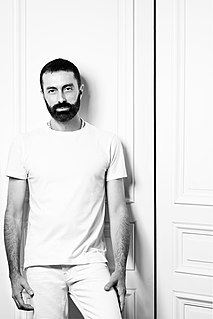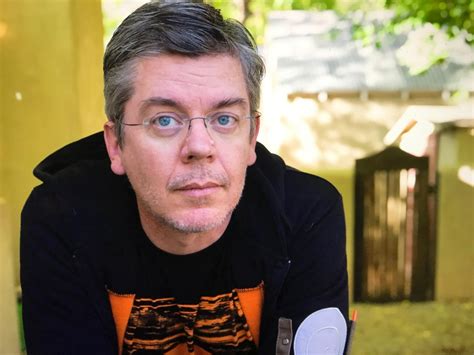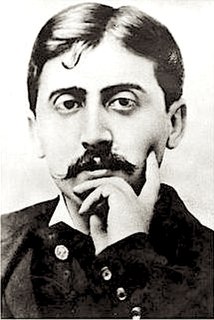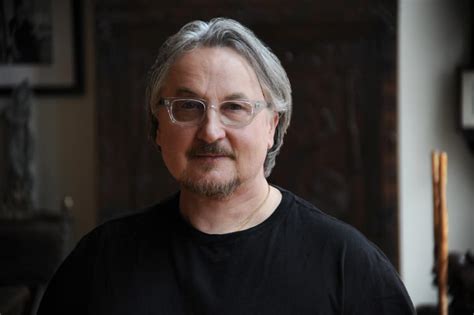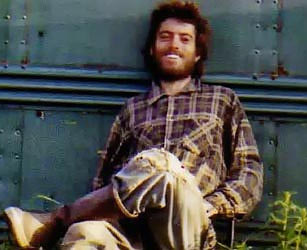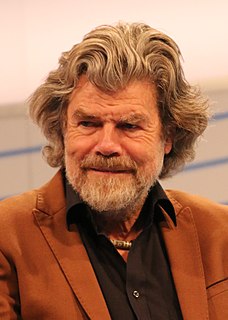A Quote by Isabella Bird
Can anything be more grotesque and barbarous than our 'florists' bouquets,' a series of concentric rings of flowers of divers colours, bordered by maidenhair and a piece of stiff lace paper, in which stems, leaves, and even petals are brutally crushed, and the grace and individuality of each flower systematically destroyed?
Related Quotes
We say that flowers return every spring, but that is a lie. It is true that the world is renewed. It is also true that that renewal comes at a price, for even if the flower grows from an ancient vine, the flowers of spring are themselves new to the world, untried and untested. The flower that wilted last year is gone. Petals once fallen are fallen forever. Flowers do not return in the spring, rather they are replaced. It is in this difference between returned and replaced that the price of renewal is paid. And as it is for spring flowers, so it is for us.
If, I can someday see M. Claude Monet's garden, I feel sure that I shall see something that is not so much a garden of flowers as of colours and tones, less an old-fashioned flower garden than a colour garden, so to speak, one that achieves an effect not entirely nature's, because it was planted so that only the flowers with matching colours will bloom at the same time, harmonized in an infinite stretch of blue or pink.
The word 'vegetable' has no precise botanical meaning in reference to food plants, and we find that almost all parts of plants have been employed as vegetables - roots (carrot and beet), stems (Irish potato and asparagus), leaves (spinach and lettuce), leaf stalk (celery and Swiss chard), bracts (globe artichoke), flower stalks and buds (broccoli and cauliflower), fruits (tomato and squash), seeds (beans), and even the petals (Yucca and pumpkin).
You can create substances with other naturally grown substances and you can synthesize beautiful bouquets of flowers without spending an arm and a leg, using the citrus fruits, which are much more affordable than flowers, because you need so many flowers to create the essences. In this country [USA], there is not a traditional science of making it. The Native Americans never did it. They bundled the sage.
That's the words: "So I'm back to the velvet underground" - which is a clothing store in downtown San Francisco, where Janis Joplin got her clothes, and Grace Slick from Jefferson Airplane, it was this little hole in the wall, amazing, beautiful stuff - "back to the floor that I love, to a room with some lace and paper flowers, back to the gypsy that I was."
One thing is certain: you can never become anything other than yourself, and unless you become yourself you cannot be happy. Happiness happens only when a rosebush grows roseflowers; when it flowers, when it has its own individuality. You may be a rosebush and trying to flower as lotus flower - that is creating insanity. Erase the mind. And the way to erase it is not by fight: the way to erase it is just to become aware.
You find a flower half-buried in leaves,
And in your eye its very fate resides.
Loving beauty, you caress the bloom;
Soon enough, you'll sweep petals from the floor.
Terrible to love the lovely so,
To count your own years, to say I'm old,
To see a flower half-buried in leaves
And come face to face with what you are.
All flowers are flirtatious - particularly if they carry hyphenated names. The more hyphens in the name, the flirtier the flower. The one-hyphen flowers - black-eyed Susan; lady-smock; musk-rose - may give you only a shy glance and then drop their eyes; the two-hyphen flowers - forget-me-not; flower-de-luce - keep glancing. Flowers with three or more hyphens flirt all over the garden and continue even when they are cut and arranged in vases. John-go-to-bed-at-noon does not go there simply to sleep.
Marriage can be whatever you define it as. For example, I don't feel like I need a piece of paper that says I own her and she owns me. I think signing a piece of paper doesn't mean anything in the eyes of God or in the eyes of people. The thing is, if you are together and you love each other and are good to each other, make babies and all that, for all intents and purposes you are married.
Early in life, when I first saw waterlilies on the ripples of a lake, I didn't think they were flowers which grew from the water, but rather flowers which were mirrored from the shore into the lake. So many flowers grow in the silent waters of our souls, and they unfold their petals over the glaze of our consciousness: they grow from within us, but we think them reflections from the external world.
I consider lace to be one of the prettiest imitations ever made of the fantasy of nature; lace always evokes for me those incomparable designs which the branches and leaves of trees embroider across the sky, and I do not think that any invention of the human spirit could have a more graceful or precise origin.


